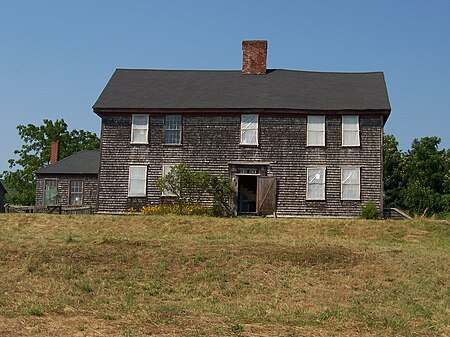Stanton–Davis Homestead Museum
1700 establishments in ConnecticutHistoric house museums in ConnecticutHouses completed in 1700Houses in Stonington, ConnecticutHouses on the National Register of Historic Places in Connecticut ... and 3 more
Museums in New London County, ConnecticutNational Register of Historic Places in New London County, ConnecticutProposed museums in the United States

The Stanton–Davis Homestead Museum (formerly known as the Robert Stanton House) is a historic house on Greenhaven Road in Stonington, Connecticut. It was built around 1700. The property has been a working farm for over 350 years, most by members of the Davis family. As of 2012, the house was boarded up and the Stanton family society was struggling to raise renovation funds.
Excerpt from the Wikipedia article Stanton–Davis Homestead Museum (License: CC BY-SA 3.0, Authors, Images).Stanton–Davis Homestead Museum
Osbrook Point,
Geographical coordinates (GPS) Address Nearby Places Show on map
Geographical coordinates (GPS)
| Latitude | Longitude |
|---|---|
| N 41.334166666667 ° | E -71.850555555556 ° |
Address
Osbrook Point 181
06379
United States
Open on Google Maps









